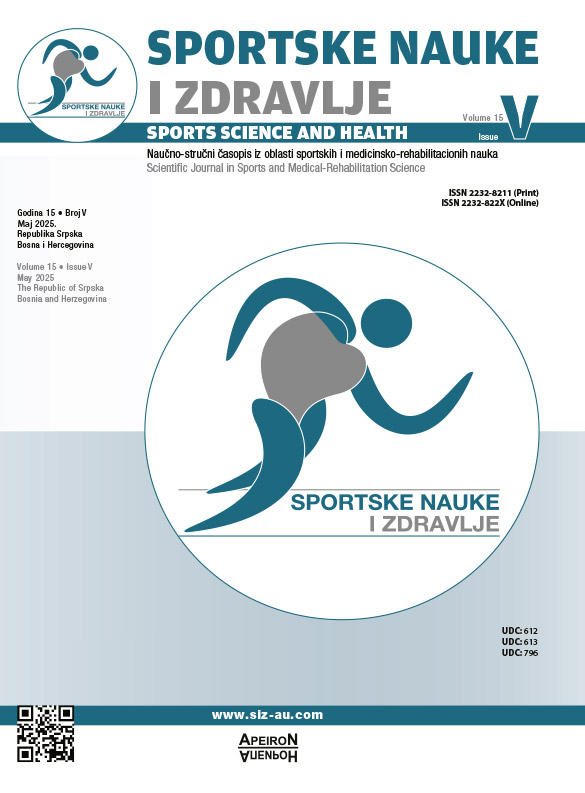The Effect of Six Weeks Plyometric Box Jump and Drop Jump Training on Leg Muscle Explosive Power and Strength
DOI:
https://doi.org/10.7251/SSH25V096PKeywords:
Strength, Explosive Power, PlyometricAbstract
The purpose of this study is to enhance the performance of athletic athletes through plyometric box jump and plyometric drop jump training methods. Thirty selected athletes meeting the criteria underwent a pretest to determine the grouping into the plyometric box jump, plyometric drop jump, and control groups. A back leg dynamometer was used to measure leg muscle strength, while the jump MD test was used to assess leg muscle explosive power. Each group underwent progressive training for six weeks, with three training sessions per week. The results of the paired sample t-test showed that the plyometric box jump training method had a significant effect on both leg muscle strength and explosive power. Meanwhile, the plyometric drop jump training method demonstrated a significant effect on leg muscle strength. It can be concluded that both plyometric box jump and plyometric drop jump training methods are effective for improving the two key physical components: leg muscle strength and explosive power.
